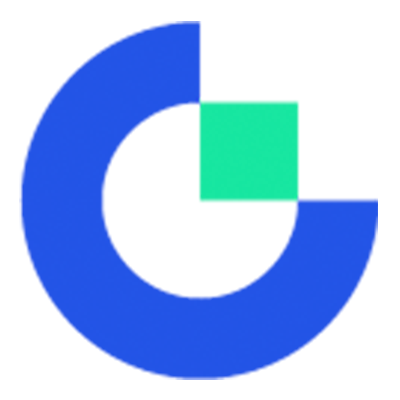Introduction
Are you ready to dive into the fascinating world of Web2 vs Web3? From centralized platforms to decentralized networks, the internet is evolving at lightning speed. Discover how these technologies are reshaping our digital landscape, transforming data ownership, and revolutionizing economic models. Join us as we explore the rise of Web2 and the promise of Web3 in this comprehensive comparison.
The Rise of Web2: Centralization and User-Generated Content
The evolution of the internet has been marked by significant shifts in how users interact with online content and services. Web2, the current dominant form of the internet, emerged in the early 2000s and revolutionized the digital landscape. Characterized by user-generated content, social networking, and interactive experiences, Web2 has become an integral part of our daily lives.
One of the key features of Web2 is its centralized nature. Large tech companies like Google, Facebook, and Amazon have become the gatekeepers of information and services, controlling vast amounts of user data. This centralization has led to unprecedented connectivity and convenience, but it has also raised concerns about privacy and data ownership.
The rise of social media platforms has been a defining characteristic of the Web2 era. These platforms have transformed how we communicate, share information, and consume content. According to recent statistics, there are now over 4.7 billion active social media users worldwide, representing 59% of the global population[1]. This massive user base has created a wealth of data that companies use to tailor services and target advertisements.
E-commerce has also flourished in the Web2 environment. Online marketplaces and digital payment systems have made it easier than ever for consumers to purchase goods and services from anywhere in the world. In 2023, global e-commerce sales are projected to reach $6.3 trillion, highlighting the immense economic impact of Web2 technologies[2].
However, the centralized nature of Web2 has its drawbacks. Users often have limited control over their personal data, which is stored and managed by large corporations. This has led to growing concerns about privacy breaches and the misuse of personal information. As a result, there is an increasing demand for more transparent and user-centric internet technologies.
Web3: Decentralization and Blockchain Revolution
As we move beyond the centralized structures of Web2, a new paradigm is emerging: Web3. This next generation of the internet aims to address the shortcomings of its predecessor by leveraging blockchain technology and decentralized networks. Web3 represents a fundamental shift in how we interact with the digital world, promising greater user control, enhanced privacy, and new economic models.
At the core of Web3 is the concept of decentralization. Unlike Web2, where data and services are controlled by a few large entities, Web3 distributes power across a network of users. This is achieved through blockchain technology, which enables secure, transparent, and tamper-resistant record-keeping without the need for a central authority.
One of the key advantages of Web3 is its potential to give users true ownership of their data and digital assets. In the Web3 ecosystem, individuals can control their personal information and decide how it is shared and used. This represents a significant departure from the Web2 model, where user data is often treated as a commodity to be bought and sold.
The integration of cryptocurrency and tokenization is another crucial aspect of Web3. These technologies enable new forms of value exchange and economic incentives within decentralized applications (dApps). For example, users can be rewarded with tokens for contributing content or participating in network governance.
The potential applications of Web3 are vast and diverse. From decentralized finance (DeFi) platforms that offer financial services without intermediaries to non-fungible tokens (NFTs) that revolutionize digital ownership, Web3 is opening up new possibilities across various industries. According to recent projections, the global blockchain market size is expected to grow from $7.18 billion in 2022 to $163.83 billion by 2029, at a CAGR of 56.3%[3].
Data Ownership: From Corporate Control to User Empowerment
The transition from Web2 to Web3 marks a significant shift in the paradigm of data ownership and control. In the Web2 era, user data has been largely controlled by centralized entities, often without full transparency or user consent. This model has led to numerous privacy concerns and data breaches, eroding user trust in online platforms.
Web3 aims to address these issues by putting data ownership back into the hands of users. Through blockchain technology and decentralized storage solutions, Web3 enables individuals to have greater control over their personal information and digital assets. This shift has profound implications for privacy, security, and the overall user experience on the internet.
In the Web3 ecosystem, users can choose how their data is shared and monetized. For instance, platforms like Brave browser allow users to earn rewards for viewing ads, giving them a stake in the value created by their online activities. This model stands in stark contrast to the Web2 approach, where user data is often harvested and monetized without direct user compensation.
The concept of self-sovereign identity is another key aspect of data ownership in Web3. This allows individuals to manage their digital identities without relying on centralized authorities. According to a recent study, the global self-sovereign identity market is expected to grow from $85.6 million in 2020 to $359.8 million by 2025, at a CAGR of 33.3%[4].
Economic Models: Advertising vs Tokenomics
The economic models underpinning Web2 and Web3 represent fundamentally different approaches to value creation and distribution on the internet. Web2's economic model is primarily based on advertising and data monetization. Large platforms offer free services to users in exchange for their personal data, which is then used to target advertisements. This model has proven highly lucrative for tech giants, with global digital advertising spending reaching $455.3 billion in 2021[5].
In contrast, Web3 introduces a new economic paradigm based on tokenomics. This model leverages cryptocurrencies and blockchain technology to create decentralized economies within digital ecosystems. Users can earn tokens for contributing to networks, participating in governance, or providing valuable services. These tokens can have real-world value and be traded on cryptocurrency exchanges.
The tokenomic model of Web3 has the potential to create more equitable value distribution. Instead of a few large companies capturing the majority of value, Web3 platforms can distribute rewards more directly to users and contributors. This aligns incentives between platform developers and users, potentially leading to more sustainable and user-centric ecosystems.
Decentralized finance (DeFi) is a prime example of Web3 economics in action. DeFi platforms offer financial services without traditional intermediaries, allowing users to lend, borrow, and trade assets directly. The total value locked in DeFi protocols has grown exponentially, reaching $78.5 billion as of September 2023[6].
As the internet continues to evolve, the economic models of Web2 and Web3 will likely coexist and compete. Platforms like Gate.io are at the forefront of this transition, offering users access to both traditional and decentralized financial services. The ultimate success of these models will depend on their ability to provide value, security, and user empowerment in the digital age.
Conclusion
The internet's evolution from Web2 to Web3 marks a pivotal shift in our digital landscape. While Web2 brought user-generated content and social connectivity, Web3 promises decentralization and user empowerment. This transition challenges the centralized data control of tech giants, offering individuals true ownership of their digital identities and assets. As tokenomics and blockchain technology reshape economic models, the future internet may blend the best of both worlds, prioritizing user privacy, security, and value distribution.
Risk warning: Regulatory changes or technological limitations could slow Web3 adoption, potentially maintaining Web2's dominance longer than anticipated.
References
Web 2.0 vs. Web 3.0: The Evolution of the Internet Web2 vs. Web3: What's the Difference? [The Breakthrough] Web 3.0 Explained, Plus the History of Web 1.0 and 2.0 Web2 vs Web3: Understanding the Evolution of the Internet Web2 vs. Web3: Understanding the Evolution of the Internet Web2 vs Web3: Understanding the Evolution of the Internet



还没有评论,来说两句吧...